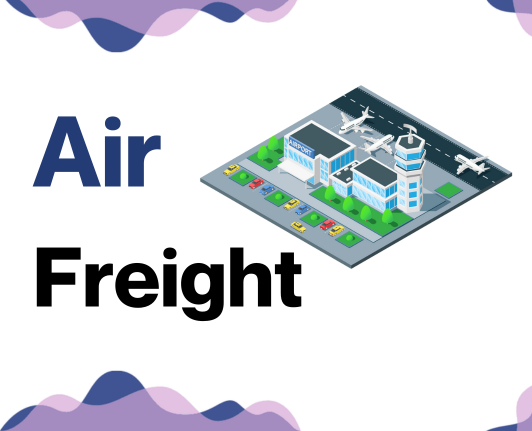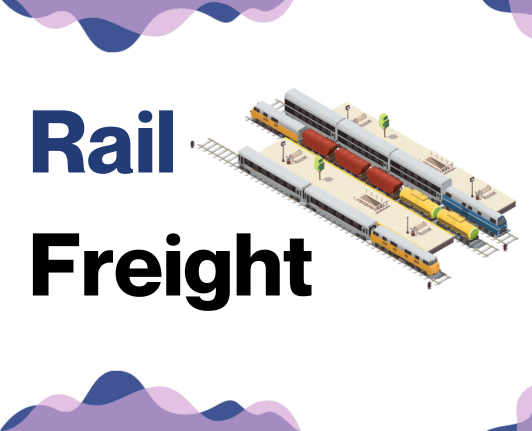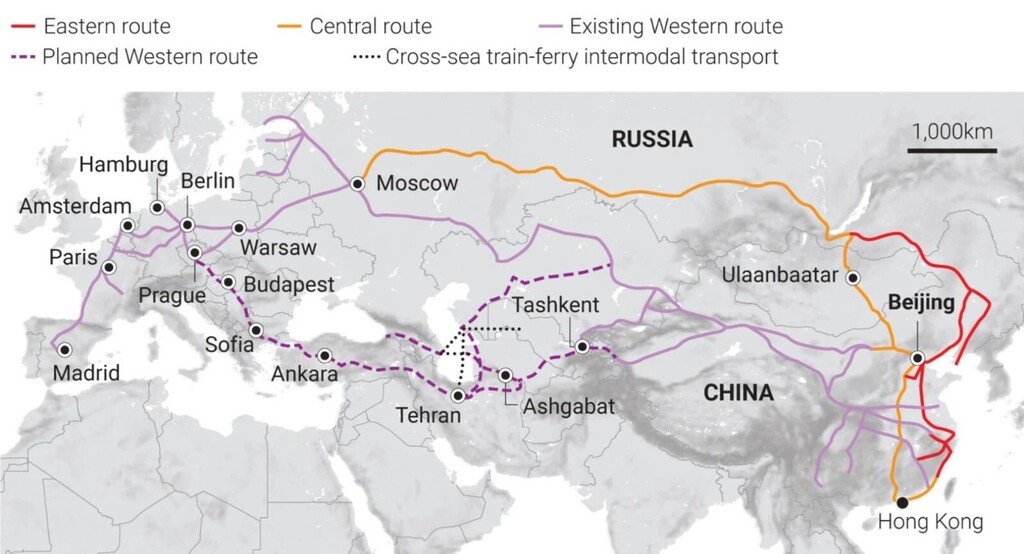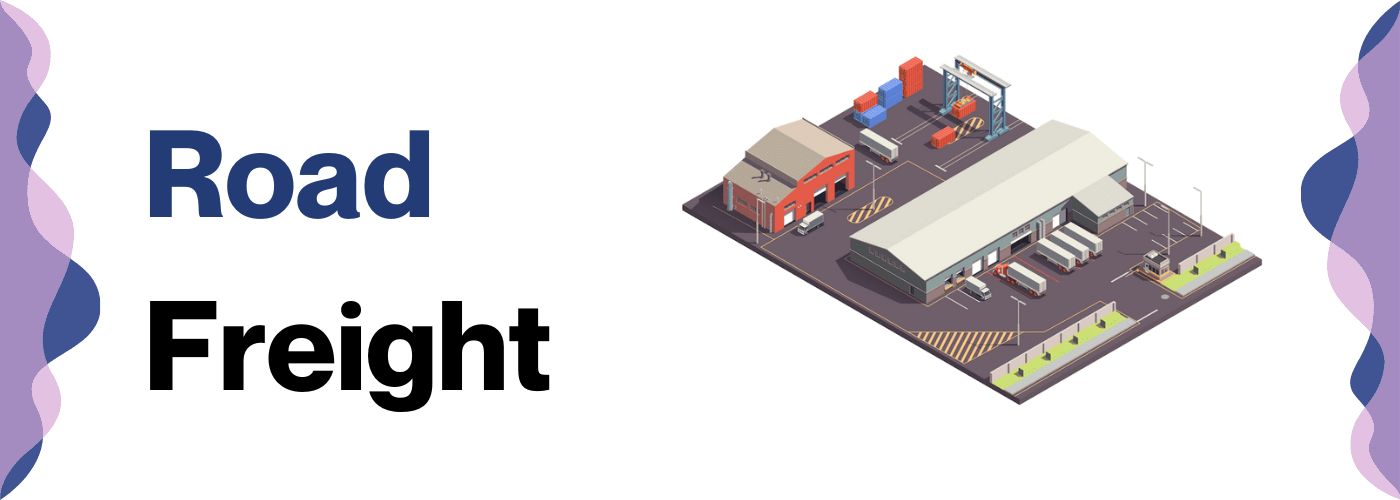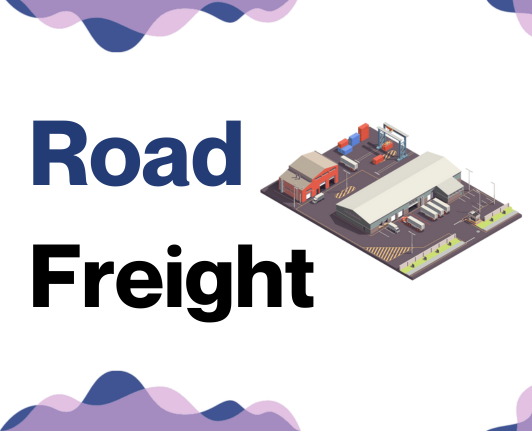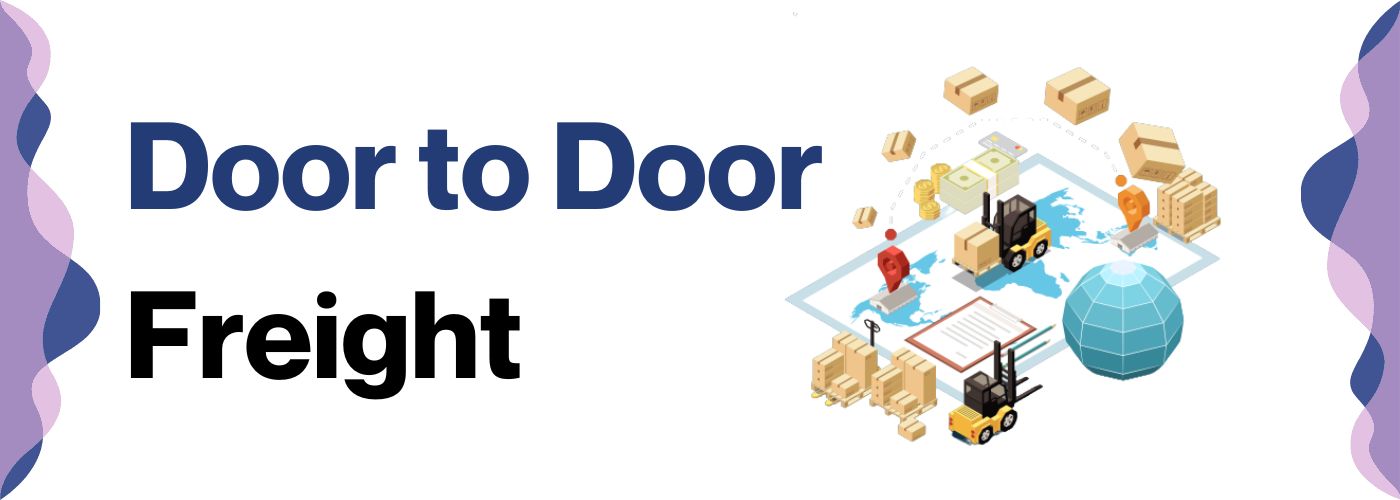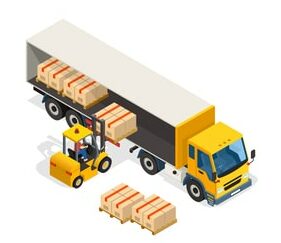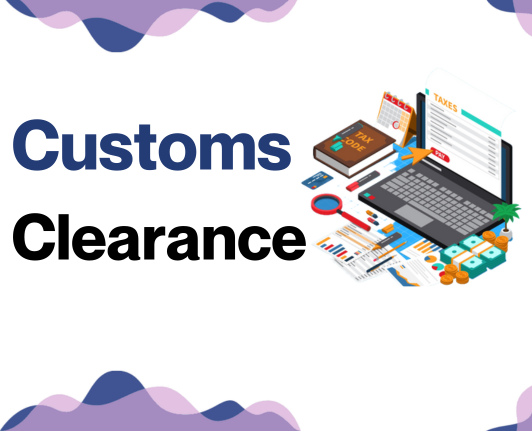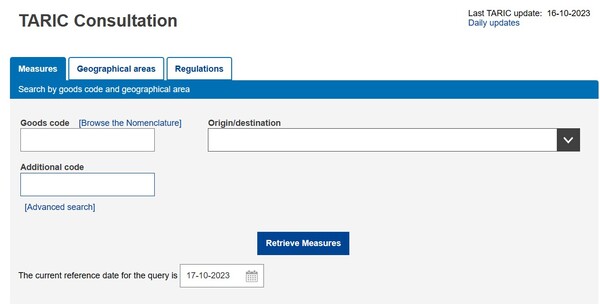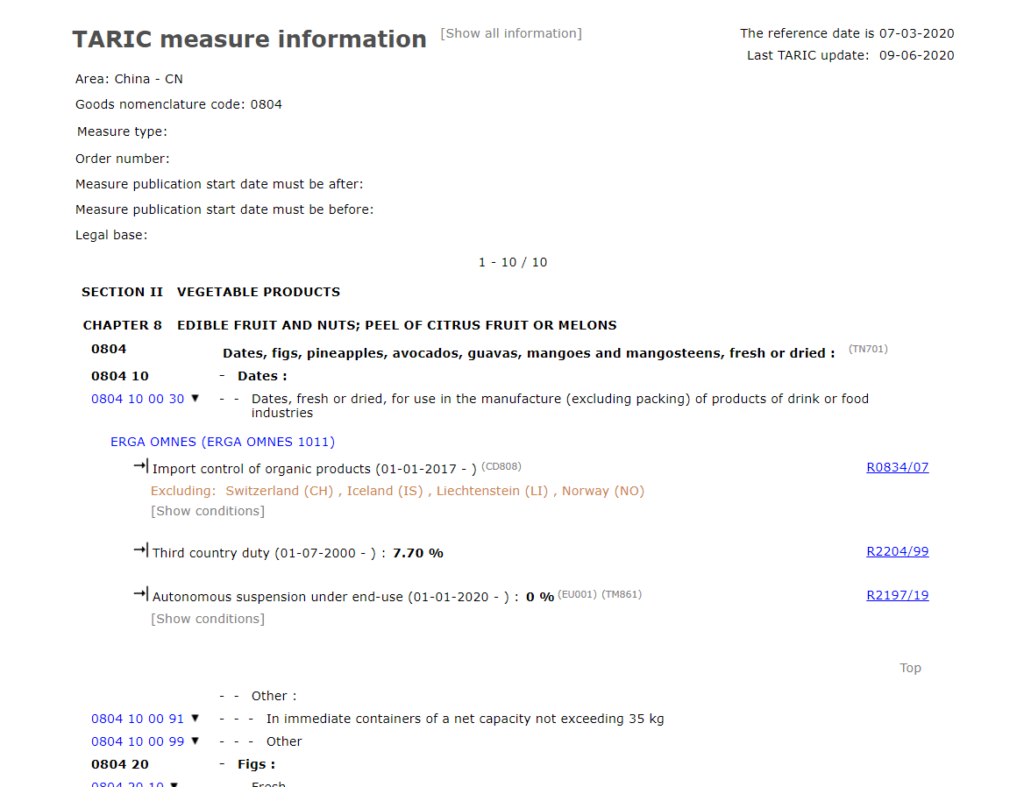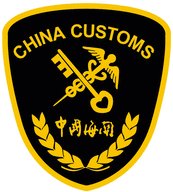Going through the freight journey from China to Belgium can sometimes feel like deciphering a secret code. It's all about cracking the code on fare structures, understanding transit times, and navigating the maze of customs rules.
In this guide, you'll dive deep into the world of air, sea, road, and rail freight, ensuring your goods touch down smoothly. Unwrap the simple steps to breeze through customs and tackle duties and taxes like a pro.
And for businesses seeking bespoke guidance, we've got you covered, making this intricate process feel like a walk in the park. And if it all still seems a tad daunting, give DocShipper a shout!
Which are the different modes of transportation between China and Belgium?
When you're shipping goods from the Great Wall all the way to the grand Atomium, two common transportation methods dominate - air and sea. Picture the vast distance - it cannot be covered quickly by road or rail transport. Sea freight logistically fits like a glove as it offers significant cargo space, ideal for bulk goods. However, imagine a speedboat racing across the ocean - that's your air freight, it gets there faster but has restricted space. The choice between sea and air freight should be like picking apples or oranges based on your needs - timing, cost, or the type of goods.
How can DocShipper help?
Thinking of shipping goods from China to Belgium? At DocShipper, we simplify the complex process for you, managing everything from transport organization to customs clearance. We're your reliable ally in global trade. Got a question? Reach out to our consultants free of charge. Need a quote? Contact us and get a free estimate within just 24 hours.
DocShipper Tip: Sea freight might be the best solution for you if:
- You are shipping large volumes or bulky items, as sea freight offers the most space at a cost-effective rate.
- Your cargo doesn't have an urgent deadline, as sea freight typically has longer transit times compared to air or rail.
- Your shipping routes are between major ports, allowing you to leverage the extensive global network of sea shipping lanes.
Sea freight between China and Belgium
Ocean shipping between China and Belgium fosters a robust trade relationship. Key ports like Shanghai and Zeebrugge bridge these nations' industrial sectors, forming a bustling corridor of exchange. But the sea's waves aren't always smooth- shippers frequently face challenges on this route. Shipping high-volume goods via ocean freight from the dragon land to the heart of Europe? Yes, it's cost-efficient but patience-testing due to the lengthy transit time.
Now, let's address the elephant in the room – the pain points. Chances are, you might have navigated the labyrinth of international shipping only to find yourself at your wit's end.
- Lost in the maze of documentations?
- Caught off guard by unexpected customs duties?
You’re not alone; even seasoned businesses stumble here.
But hey! Don't fret. Just like learning to ride a bicycle, there's a knack to it. In this guide, we'll be your training wheels, highlighting best practices and unwritten rules for a smoother ride across the bumpy path of China-Belgium shipping.
Main shipping ports in China
Port of Shanghai
Location and Volume: Located in the Yangtze River Delta, the Port of Shanghai is fundamental for its proximity to major manufacturing and commercial areas and towering shipping volume of over 47.3 million TEUs in 2022.
Key Trading Partners and Strategic Importance: The port maintains strong relations with North America, Europe, and the dynamic economies of East Asia, reinforcing its status as the world's busiest container port.
Context for Businesses: If you're intending to access the booming Asian markets or connect with global trading hubs, the Port of Shanghai has the volume, connections and strategic location to facilitate efficient trade.
Port of Ningbo-Zhoushan
Location and Volume: Found in the Zhejiang province, the Port of Ningbo-Zhoushan is integral for its key location within the prosperous Yangtze River Delta, with a substantial shipping volume of over 33.35 million TEUs in 2022
Key Trading Partners and Strategic Importance: This port connects with over 600 ports from more than 100 countries, securing major trade links with Europe, America, Africa, and Australia.
Context for Businesses: Looking to diversify your global operations? The Port of Ningbo-Zhoushan, with its extensive reach, might be indispensable for engaging diverse markets across continents.
Port of Shenzhen
Location and Volume: Situated in Guangdong province, and serving its special economic zones, the Port of Shenzhen ships over 33.35 million TEUs and is central to South China's export-oriented industries.
Key Trading Partners and Strategic Importance: The port garners strong commercial alliances primarily with Southeast Asia, Europe, and the Americas.
Context for Businesses: If aiming for robust exports to consumption-intensive regions, the Port of Shenzhen's strategic location and connectivity might be pivotal in your shipping strategy.
Port of Guangzhou
Location and Volume: Found at the junction of the Pearl River Delta, the Port of Guangzhou has a shipping volume over 24.6 million TEUs in 2022 and serves a major consumer market.
Key Trading Partners and Strategic Importance: Key trading partners include Southeast Asia, Europe, and the United States.
Context for Businesses: Wishing to penetrate the Chinese domestic market or Southeast Asia? The Port of Guangzhou can serve as a gateway, given its proximity and accessibility to regions of economic density.
Port of Qingdao
Location and Volume: Located midway along China's coast, at the Yellow Sea, the Port of Qingdao has a shipping volume of over 25.670 million TEUs in 2022.
Key Trading Partners and Strategic Importance: It nurtures trade with significant partners in East Asia, the EU, and North America.
Context for Businesses: If you're consolidating your operations across different regions, the Port of Qingdao, with its central location & robust connectivity, can be your logistics solutions hub.
Port of Tianjin
Location and Volume: Located in the Bohai Rim, the Port of Tianjin, with a shipping volume of nearly 20.120 million TEUs, is Northern China's primary sea gateway.
Key Trading Partners and Strategic Importance: It boasts key trading links with East Asia, Europe, and North America.
Context for Businesses: If you're seeking a reliable staging post for operations in Northern China or connecting with East Asian economies, the Port of Tianjin provides a logistical cornerstone to do so.
Main shipping ports in Belgium
Port of Antwerp
Location and Volume: Situated in the heart of Europe in Antwerp, this port is a pivotal hub due to its comprehensive network of connections, with a shipping volume of over 13,484,122 TEU in 2022.
Key Trading Partners and Strategic Importance: Repeatedly scoring high in international rankings, the Port of Antwerp traditionally conducts trade with countries such as Germany, Netherlands, France and the USA. Furthermore, its strategic importance as a chemical cluster cannot be overstated.
Context for Businesses: If you're looking to tap into chemical-related industries and need services like container, breakbulk, liquid bulk and dry bulk shipping, the Port of Antwerp might be the strategic enabler for your shipping strategy given its versatile and abundant logistic capabilities.
Port of Zeebrugge
Location and Volume: Located in the Belgian coastal city of Zeebrugge, this port is crucial for numerous industries, particularly automotive, seeing as it handled around 3.0 million TEU in 2022.
Key Trading Partners and Strategic Importance: The port facilitates trade predominantly with the UK, alongside serving as a critical automotive logistics hub in Europe.
Context for Businesses: The strategic importance of Port of Zeebrugge lies in its excellent ro-ro, vehicle handling and cold chain facilities. For businesses in the automotive or perishables sectors looking to transport goods to adjacent European nations, this port could be a cornerstone of your logistical patterns.
Port of Ghent
Location: Located in Ghent, it holds importance for many industries.
Key Trading Partners and Strategic Importance: It serves a wide range of trading partners, with Turkey, Russia, and Brazil playing a significant role. One strategic aspect is the inland connectivity ensured by an extensive network of rail, roads, pipelines, and waterways.
Context for Businesses: If you're trying to ensure a smooth inland transit of goods, exploring multi-modal logistics solutions or breaking into markets in Eastern Europe and South America, Ghent could be a vital player in your logistics jigsaw due to its well-connected network and versatile services.
Port of Ostend
Location: the port is located in the Flemish Region along the English Channel.
Key Trading Partners and Strategic Importance: The port's strategic importance lies in its appeal to short-sea shipping operations, most prominently with the UK and Scandinavian countries.
Context for Businesses: If your operations require short-sea shipping or are heavily centered around the North Sea and English Channel regions, Port of Ostend can help drive your business forward with its excellent ferry and ro-ro facilities, and ideal geographic location.
Port of Brussels
Location and Volume: Tucked into the heart of Belgium’s capital city, the Port of Brussels handled nearly 6.8 million tonnes of freight in 2022.
Key Trading Partners and Strategic Importance: Mainly shipping to ports in France, Germany, and the Netherlands, its strategic importance lies primarily in its urban locale, facilitating quick transfer of goods to and from the city.
Context for Businesses: The Port of Brussels may be your ideal partner for urban logistics, especially if your business focuses largely on metropolitan supply chains, given its specialized services and prime city-center location.
Should I choose FCL or LCL when shipping between China and Belgium?
Sea freight between China and Belgium: a puzzle of choices. As you determine your shipping strategy, two compelling options emerge, Full Container Load (FCL) and Less than Container Load (LCL), also known as consolidation. Your selection will significantly influence cost, delivery timelines, and overall shipping success. Let's delve into the distinctions to help you chart the course that best suits your specific needs. Be prepared, this choice is more than a trade-off; it's an essential cog in your logistics machinery.
LCL: Less than Container Load
Definition:
LCL (Less than Container Load) is a shipment method where multiple shipments are consolidated into one container for cost efficiency.
When to Use:
LCL is ideal for smaller volumes of cargo, specifically under 13 to 15 CBM. It provides flexibility that FCL (Full Container Load) may lack, by accommodating the shipping needs of several clients in one container.
Example:
Let's say a Belgian chocolate maker needs to import 10 CBM of premium cocoa from China. Instead of investing in an entire container, they can opt for LCL shipment, sharing the space and costs with other businesses.
Cost Implications:
Although LCL freight is often cheaper than FCL on a volume basis, remember the cost per unit is usually higher due to extra handling at both origin and destination. However, with LCL, you only pay for the space you use, making it a potentially cost-efficient choice for low-volume shipments. Overall, it's a balance between volume, cost, and flexibility that you should consider when utilizing LCL.
FCL: Full Container Load
Definition: Full Container Load (FCL) shipping refers to when you reserve an entire container solely for your cargo, typically using a 20'ft or 40'ft container. This method, known as FCL shipping, is attractive for its security as your shipment remains sealed from origin to destination.
When to Use: For those shipping more than 13/14/15 CBM, FCL is usually the more economical option. This is due to the high-volume capacity of an FCL container, which allows a larger amount of goods to be transported for a lower relative cost.
Example: Consider a furniture manufacturer in China, shipping a large order of 500 chairs to a distributor in Belgium. With each chair taking up around 0.1 CBM, this easily exceeds the 15 CBM threshold, making FCL shipping the cheapest and safest method to use.
Cost Implications: Requesting an FCL shipping quote from your freight forwarder will reveal that, while the upfront cost may be higher than Less than Container Load (LCL), the cost per unit becomes cheaper as your shipping volume increases. As such, FCL proves to be more cost-effective for larger shipments.
Unlock hassle-free shipping
Ship smarter with DocShipper! Our mission? Making international shipping a breeze for your business, no matter the load size. Find clarity with our ocean freight experts who guide you in choosing between consolidation services or a full container from China to Belgium. Factors like cost, volume, and urgency all matter - we take them into account. Ready to optimize your logistics? Request your free, no-obligation quote today and let's get shipping!
How long does sea freight take between China and Belgium?
On average, sea freight transportation between China and Belgium takes around 30-40 days. These transit times factor in various elements such as the specific ports used, the weight of the shipment, and the nature of the goods. Since these variables can significantly influence transit times, it's highly recommended to reach out to a reliable freight forwarder like DocShipper for a customized quotation.
To provide more specific details, here is a reflectance table of the average transit times for sea freight between the main freight ports in China and Belgium:
| China Ports | Belgium Ports | Average Transit Time (Days) |
| Shanghai | Antwerp | 25 |
| Shenzhen | Antwerp | 27 |
| Ningbo | Antwerp | 29 |
| Guangzhou | Antwerp | 28 |
Keep in mind these are just average times and the actual duration may vary based on the aforementioned factors. Always confirm with your freight forwarder for precise timing.
How much does it cost to ship a container between China and Belgium?
Determining the exact shipping cost to transport a container from China to Belgium isn't a one-size-fits-all answer. Ocean freight rates can widely vary from $30 to a few hundred dollars per CBM, influenced by factors like the selected carrier, the nature of your goods, your chosen Points of Loading and Destination, along with the ceaseless ebb and Tide of monthly market fluctuations. Worry not, our dedicated shipping specialists meticulously analyze these elements to offer you competitive, case-by-case quotes. You're not alone in this journey - we're committed to finding you the best possible route for your cargo's voyage.
Special transportation services
Out of Gauge (OOG) Container
Definition: OOG containers are specifically designed for cargo that cannot fit within the dimensions of standard containers. This means the cargo might be taller, wider, or longer than usual– thus 'out of gauge.'
Suitable for: Out of gauge cargo such as heavy machinery, large equipment, and industrial goods that exceed typical container measurements.
Examples: Large construction equipment for major infrastructure projects, factory components, windmills, yachts, etc.
Why it might be the best choice for you: If your goods cannot fit inside standard containers and are not overly sensitive to the elements, an OOG container can offer a cost-effective shipment between China and Belgium.
Break Bulk
Definition: Break bulk refers to goods that are loaded individually rather than in shipping containers. The goods are typically bundled into crates, drums or bags for ease of handling.
Suitable for: Loose cargo loads that are too substantial or oddly shaped for traditional containers.
Examples: Construction materials, metal sheets, timber, machinery and large engines.
Why it might be the best choice for you: If your cargo is too big for containers, but can be individually handled, Break Bulk shipping offers versatility and cost-efficiency.
Dry Bulk
Definition: Dry Bulk refers to goods shipped in large quantities, unloaded directly into the ship’s hold and transported without packaging.
Suitable for: Commodities that are shipped in mass and don't require packaging such as grains, coal, cement, ores, and minerals.
Examples: Bulk shipments of grain, sand, or fertilizer between China and Belgium.
Why it might be the best choice for you: If you’re dealing with massive amounts of certain unpackaged commodities, Dry Bulk shipping may provide an efficient and economical solution.
Roll-on/Roll-off (Ro-Ro)
Definition: Ro-Ro vessels are ships with built-in ramps allowing cargo to be efficiently rolled on and rolled off the vessel when in port.
Suitable for: Self-propelled, towable, or mobile units such as vehicles, trailers, and machinery.
Examples: Cars, trucks, semi-trailers, buses, personal vehicles, or large agricultural equipment.
Why it might be the best choice for you: If your cargo consists of motorized or towable goods, using a ro-ro vessel ensures ease of loading and unloading and can be more cost-effective than container shipping.
Reefer Containers
Definition: Reefer containers are refrigerated containers used in the transportation of perishable goods maintaining a specific temperature in transit.
Suitable for: Temperature sensitive cargo including food items, pharmaceuticals, and organic products.
Examples: Fresh or frozen produce, seafood, meat, dairy products, medical supplies, or temperature-sensitive chemicals.
Why it might be the best choice for you: If you're shipping perishable or temperature-sensitive products, especially over longer routes, Reefer containers provide a safe, climate-controlled environment.
Understanding these options empowers you to select the most efficient shipping method tailored to your cargo. DocShipper, with years of industry experience, is always ready to help you navigate these choices. Feel free to reach out to us with any queries or for a free shipping quote, guaranteed in less than 24 hours.
DocShipper Tip: Air freight might be the best solution for you if:
- You are in a hurry or have a strict deadline requirement, as air freight offers the fastest transit times.
- Your cargo is less than 2 CBM (Cubic Meter), making it more suitable for smaller shipments.
- Your shipment needs to reach a destination that is not easily accessible by sea or rail, allowing you to tap into the extensive network of global airports.
Air freight between China and Belgium
Reliability and quick delivery times make air freight your ace in the hole when shipping from China to Belgium. In the hustle and bustle of global trade, sending miniature high-value electronics or designer goods via air can save you both time and money.
Yet, in this fast-paced air freight world, it's easy to drop the ball. When estimating shipping costs, many merchants fumble by not using the right weight formula - it's like trying to measure your luggage with a bathroom scale instead of an appropriate shipping scale.
Ignorance of best practices, too, could leave you paying through the nose. Stay tuned as we unravel these common blunders and arm you with the know-how to ace air freight.
Air Cargo vs Express Air Freight: How should I ship?
Are you a business wondering whether to ship your goods from China to Belgium using air cargo or express air freight? While air cargo means sharing space in a commercial airline with other freight, express air freight scores a whole plane to itself for speedier deliveries. Let's delve into the ins and outs of these two options and help you determine the best fit for your shipping needs.
Should I choose Air Cargo between China and Belgium?
Considering shipping goods between China and Belgium? Air cargo could prove the most cost-effective and reliable for your business, particularly for weights over 100/150 kg (220/330 lbs). Though transit times maybe longer due to fixed schedules, airlines such as Air China Cargo and Brussels Airlines Cargo offer an impressive service. Weigh the pros and cons, and you might find air freight aligns well with your budget and shipping requirements.
Should I choose Express Air Freight between China and Belgium?
Choosing Express Air Freight, a premium service using dedicated cargo planes for speedy delivery, can be your ideal choice for shipping goods under 1 Cubic Meter (CBM) or 100/150 kg (220/330 lbs). This swift method, offered by top-notch courier firms such as FedEx, UPS, or DHL, ensures your cargo reaches Belgium from China in record time. Perfect for urgent or high-value shipments, choosing this option signifies prioritizing speed over cost.
Main international airports in China
Beijing Capital International Airport
Cargo Volume: Beijing Capital International airport moved approximately 988,675 tonnes of cargo in 2022.
Key Trading Partners: USA, Japan, South Korea, Germany, and Australia.
Strategic Importance: As China's busiest and most important aviation hub, it offers a direct shipping link to most global destinations.
Notable Features: Home to China’s own Air China, it has three operative terminals with advanced cargo handling facilities.
For Your Business: Close proximity to markets in north China, with excellent multi-modal connectivity offers smooth transfer of goods to nearby cities.
Shanghai Pudong International Airport
Cargo Volume: Handling over 3.9 million tonnes of cargo in 2022, this airport ranks third in the world and first in China.
Key Trading Partners: USA, Japan, South Korea, Germany, and Singapore.
Strategic Importance: Key hub for international cargo, with a special Free Trade Zone perfect for trans-shipments.
Notable Features: Serves over 110 transport airlines, with two main cargo areas and world-class services.
For Your Business: Ideal for high volume shipments and connecting with Asian markets. Customs clearance is faster in the Free Trade Zone, saving your business time and money.
Guangzhou Baiyun International Airport
Cargo Volume: Guangzhou handled more than 2 million tonnes of air freight in 2022.
Key Trading Partners: USA, Japan, South Korea, Canada, and Vietnam.
Strategic Importance: This is southern China's pivotal air transport gateway and prime logistical hub.
Notable Features: Home to China Southern Airlines, the airport is in the process of expanding its cargo terminals for amplified cargo capacity.
For Your Business: If you're seeking swift access to the booming markets of Southern China and Asia, Guangzhou is a prime choice.
Shenzhen Bao’an International Airport
Cargo Volume: In 2020, it accommodated nearly 1.6 million tonnes of cargo in 2022
Key Trading Partners: Hong Kong, USA, Germany, Japan, and South Korea.
Strategic Importance: Quick access to Hong Kong and key tech and production centers in Shenzhen.
Notable Features: It boasts a 24-hour customs service and advanced cold storage facilities.
For Your Business: If you are dealing with perishables or time-sensitive goods, the advanced cold storage facilities and quick access to manufacturing hubs make it a preferred choice.
Chengdu Shuangliu International Airport
Cargo Volume: Shuangliu airport processed 600 thousand tonnes of freight in 2022.
Key Trading Partners: USA, Japan, Germany, Australia, and Canada.
Strategic Importance: It's a major gateway for reaching Western China's markets and industries.
Notable Features: The airport underwent major expansion to handle increased air freight.
For Your Business: If you are targeting Western China, its strong domestic and international connectivity ensures efficient distribution of goods.
Main international airports in Belgium
Brussels Airport
Cargo Volume: Over 775,721 tons per year.
Key Trading Partners: United States, China, UAE, Germany, France.
Strategic Importance: As Belgium's largest airport, it lies in the heart of Europe and boasts a broad network of flights, serving as a critical hub for cargo traffic.
Notable Features: Has a dedicated cargo area known as 'Brucargo,' equipped with state-of-the-art facilities for the handling of all types of goods including pharmaceuticals, perishables, and live animals.
For Your Business: Its excellent connectivity and specialized facilities can ensure swift and safe transportation of your goods. If your business deals with time and temperature-sensitive products, Brussels airport might be your top choice.
Liege Airport
Cargo Volume: Over 1.1 million metric tons per year.
Key Trading Partners: China, USA, Qatar, UAE.
Strategic Importance: Liege Airport is one of the largest cargo airports in Europe and a major center for cargo airlines. It has a significant geographical advantage being situated at the heart of the Golden Triangle (Paris-Amsterdam-Frankfurt) where 66% of European buying power is concentrated.
Notable Features: Operates round-the-clock and presents itself as the Flexport, due to the ease and speed of goods handling and customs clearance.
For Your Business: If your shipping requires flexibility and quick turnaround times, or if your market is concentrated in the Golden Triangle, Liege airport might be the best option for your logistics chain.
Ostend-Bruges International Airport
Cargo Volume: Over 28,000 metric tons per year.
Key Trading Partners: Africa, Europe, Middle-East.
Strategic Importance: While smaller than Brussels and Liege, Ostend-Bruges airport is strategically located close to the seaports of Ostend, Zeebrugge, Antwerp, and Rotterdam.
Notable Features: 24/7 operations, availability of specialized handlers for different types of cargo.
For Your Business: If you're seeking to connect maritime and air freight, Ostend-Bruges airport might be the perfect fit due to its proximity to the major seaports. Its 24/7 operation also ensures that your cargo handling needs can be met at any time.
Please consult the official websites for the most accurate and up-to-date information.
How long does air freight take between China and Belgium?
Shipping goods between China and Belgium averages around 3-8 days by air freight. Remember, these estimates can vary based on your chosen airports, the weight of your shipment, and the specific nature of your goods. Accurate transit times should be verified with a reliable freight forwarder, such as DocShipper, tailored to your unique shipping needs.
How much does it cost to ship a parcel between China and Belgium with air freight?
Transporting an air freight parcel between China and Belgium might cost between $2.50 and $7.00 per kg. However, an exact price is elusive due to a spectrum of factors including distance from departure and arrival airports, parcel dimensions, weight, and contents. Rest assured, our expert team tailors shipping quotes to your specific case, optimizing for the best rates. Reach out today and receive your free, personalized quote in less than 24 hours.
What is the difference between volumetric and gross weight?
Gross weight is the actual weight of your shipment including packaging, in kilograms. On the other hand, volumetric weight, also known as dimensional weight, is a value derived from the volume of your shipment, essentially its size.
To calculate gross weight for air cargo and express air freight, simply weigh your packed shipment. If it weighs 50kg, for example, the gross weight is 50kg or approximately 110 lbs.
The calculation of volumetric weight is a bit different.
In air cargo, it's derived from the dimension of the package using this formula:
Length (cm) x Width (cm) x Height (cm) / 6000. Suppose you have a box with dimensions 100cm x 60cm x 30cm. The volumetric weight would be 100 x 60 x 30 / 6000 = 30kg, or around 66 lbs.
In express air freight service, the divisor in the formula is slightly different: Length (cm) x Width (cm) x Height (cm) / 5000. For our example, the calculation would be: 100 x 60 x 30 / 5000 = 36kg, around 79 lbs.
These calculations matter because freight charges for air shipments are derived from whichever weight is greater between the gross and volumetric weight. Understanding these calculations helps businesses accurately estimate shipping costs.
DocShipper tip: Rail freight might be the best solution for you if:
- You are looking for a cost-effective transportation method for large volumes.
- Your shipping route is well-connected by rail, providing a reliable and environmentally friendly option.
- Your cargo's destination and origin are near rail terminals, minimizing the need for additional road transportation.
Rail freight between China and Belgium
Did you know locomotives once powered by steam and coal could unlock your ticket to faster, cheaper shipping between China and Belgium? Indeed, the age-old rail connect stretching across Eurasian landmass is very much alive and thriving! When it first rattled into life in 2011, it connected not just China and Belgium but several other countries, forming a vital line of commerce.
Typically, textiles, electronics, auto parts, and machinery make their transcontinental journey on this iron pathway. Apart from bridging the export-import demands of the two countries, the rail freight bolsters their economic cooperation. Compared to sea and air freights, rail presents an appealing trade-off - slightly longer transit times but more cost-effective.
But, a word to the wise; tackling customs procedures across multiple national borders can be challenging. So, if the sound of train whistles make your heart race, let's delve deeper into whether rail freight satisfies your shipping appetite.
What are the main train stations between China and Belgium?
1. Shanghai-Nanjing line, China
A major pivot in the international network for freight, the Shanghai-Nanjing line is at the heart of China's largest economic corridor, linking two affluent cities - Shanghai and Nanjing. It has a capacity to handle high cargo volumes. This station is strategically beneficial for your business if most of your supply chain is concentrated in eastern China and your goods require easy access to the booming port city of Shanghai.
2. Shenzhen–Guangzhou line, China
This line operates in China's marquee manufacturing province, Guangdong, which is home to many multinational companies. The Shenzhen–Guangzhou line provides contiguous connectivity to Hong Kong and Digital Harbor cities through its highly efficient rail network. Relying on this station might reduce transit times if your factory or warehouse location is in the Southeast of China, especially close to Hong Kong.
3. Chengdu–Dujiangyan line, China
Serving many inland provinces in central and western China, the Chengdu-Dujiangyan line is crucial if you're striving for efficient connections to these regions. Lying at the center of the BRI - the Belt and Road initiative -- this line enjoys international attention and considerable trade volume, which could be advantageous for businesses aiming to capitalize on BRI trade growth.
4. Harbin-Dalian line, China
A high-speed and high-capacity line, the Harbin-Dalian line traverses the entire northeastern region of China. It provides a strategic connection between the agricultural hinterlands and industrial towns. For your business, if your goods are agro-based or you are subcontracting to industrial units in this area, this line could be the linchpin to your logistical management.
5. Liège-Guillemins station, Belgium
A primary train station located in Liège, Wallonia's industrial capital, it contributes significantly to the region's economic activities. The station is also connected to Germany and Luxembourg, making it an essential hub for intra-European freight transport. If your business seeks broad European distribution, Liège-Guillemins could act as an excellent logistic solution for you.
6. Antwerp-Central Station, Belgium
An integral part of Belgium's freight rail system, it reduces operational costs by giving direct access to the central areas of the country and is strategically located near the Antwerp Port, one of the busiest in the world. It’s ideal for businesses expecting heavy freight volumes and requiring streamlined access to port facilities.
7. Brussels-South Station, Belgium
This is a vital node in the overall freight network of Belgium, boasting massive cargo volume and seamless international connections. The station is crucial in linking the capital city to the rest of Europe. Consider this station if your business priorities involve rapid transportation times and efficient reach across several European nations.
8. Gent-Sint-Pieters Station, Belgium
Being the busiest railway station in Belgium outside of Brussels, it offers unparalleled accessibility and essential links to the surrounding industrial and commercial zones. Take note of this station if your freight operations are focused on Western Europe, particularly France and the Netherlands.
How long does rail freight take between China and Belgium?
Understanding the transit time between China and Belgium by rail freight can be a puzzle as several factors come into play. These could be weather conditions, rail schedules, or even holidays. On average, it typically takes about 16-22 days.
Venture with us into the vast rail networks spanning between China and Europe. We provide you an overview of their transit times and the frequency of departures. Please note, these are rough estimates and transit times can occasionally be unpredictable due to various factors beyond anyone's control.
- Zhengzhou to Hamburg (Germany): ~ 15-17 days, Departs Daily
- Zhengzhou to Munich (Germany): ~ 17-18 days, Departs Monday and Friday
- Zhengzhou to Liege (Belgium)/Milan (Italy): ~ 20 days, Departs Monday, Thursday and Friday
- Chongqing to Duisburg (Germany): ~ 16-17 days, Departs Monday/Friday
- Yiwu to Hamburg (Germany): ~ 16-18 days, Departs Monday/Thursday/Friday
- Yiwu to Duisburg (Germany): ~ 16-18 days, Departs Monday/Thursday/Friday
- Yiwu to Madrid (Spain): ~ 20 days, Departs Monday/Thursday/Friday
- Wuhan to Hamburg (Germany): ~ 17-19 days, Departs Saturday/Wednesday/Thursday
- Wuhan to Duisburg (Germany): ~ 17-19 days, Departs Saturday/Wednesday/Thursday
- Chengdu to Tilburg (Netherlands): ~ 18 days, Departs Wednesday/Sundayy
- Suzhou to Hamburg (Germany): ~ 18-20 days, Departs Sunday
- Suzhou to Duisburg (Germany): ~ 18-20 days, Departs Sunday
- Xi'an to Duisburg (Germany): ~ 18-20 days, Departs Wednesday/Thursday/Friday/Saturday
What are the advantages of rail transport between China and Belgium
Rail transport strikes an advantageous balance between cost and speed for shipping goods from China to Belgium. It's faster than sea freight—which can often be subject to uncertain sailing schedules and congestion at ports—while being significantly less expensive than air freight.
For example, a shipment of electronic goods can be in Antwerp from Guangzhou in roughly 15 days by rail, compared to over a month by sea and only a few days by air. However, while air freight might get the goods there faster, the cost would be about 4-6 times higher than rail.
Plus, with rail freight, you're likely to encounter fewer customs issues, thanks to established agreements between the involved nations. Therefore, rail transport proves to be an economical and reliable choice for businesses that need a shipping method quicker than sea freight, yet more affordable than air freight.
How much does shipping goods by train between China and Belgium cost?
Pinpointing an exact cost for shipping goods by train from China to Belgium isn't a simple task. The whole affair depends on numerous variables like type and volume of goods, delivery speed, and so on. Just like air and sea freight services, rail freight isn't a one-size-fits-all deal - it requires tailored solutions. But don’t stress!
Our dedicated team specializes in creating customized quotes that fit your specific needs. We'll ensure you receive the most cost-effective and efficient options. Why wait? Contact us and receive a free quote within 24 hours. We're ready to fast-track your freight journey.
DocShipper tip: Road freight might be the best solution for you if:
- You're looking for a cost-effective option for shorter routes. For relatively short distances, road freight can be more economical than air freight and faster than sea or rail.
- Your destination is within the same continent or a neighboring country. Road freight is often the most straightforward and quickest option for cross-border freight and shorter distances.
- Your shipment is of irregular size or shape. Trucks offer flexibility in terms of cargo types and sizes, making it easier to transport goods that might not fit into standard sea containers or air cargo spaces.
Trucking between China and Belgium
Let's hit the road with trucking services from China to Belgium. If time is on your side, this method marries efficiency and cost-effectiveness, offering a viable alternative to traditional sea or air freight.
Various routes across vast landscapes and diverse road conditions become your highway to success, but remember, transit times can be lengthier. The winds may change depending on fuel price fluctuations, so keep an eye on cost comparisons.
Despite the challenges, road freight is a practical contender with unrivaled benefits. Stay with us as we haul into exclusive insights, specifically for businesses scouting for lucrative cross-border shipping opportunities.
What if I can’t fill a truck between China and Belgium?
Unravel the distinct dynamics of Less Than Truckload (LTL) and Full Truckload (FTL) transport, pivotal concepts in cost-effective shipping between China and Belgium. Whether your venture is large-scale or time-sensitive, understanding these differences will empower you to make confident, wallet-friendly decisions on your shipping operations. Let’s delve in!
LTL: Less than Truck Load
If an LTL freight, aka Less than Truckload, catches your eye, you're not alone. This unique transport mode becomes a solid contender when your shipment doesn't fill an entire container. The perfect gauge? If your cargo is under 13, 14, or max 15 CBM (cubic meters), LTL is your ideal match.
Picture this: You have about 10 CBM worth of custom-made furniture pieces to send from Beijing to Brussels. Rushing to fill a 20 CBM container doesn’t make sense, and that's where LTL hits the sweet spot. You only pay for the truck space your goods occupy, making LTL a cost-efficient option for smaller loads.
So, when should you consider an LTL shipment? Here are a few scenarios:
- You have a compact shipment and tight budget constraints.
- It's more about regularity than volume, and you send small loads frequently.
- Your freight's flexible delivery schedule can tolerate transit stops.
- The risk of loss or damage is low, unaffected by multiple handling points.
- Keeping a lower carbon footprint matters to you, as shared space means fewer vehicles on the road.
FTL: Full Truck Load
Full Truck Load, or FTL for short, is the go-to shipping option when you need to transport a large amount of cargo. You're effectively booking the whole truck for your goods - the truck is yours and yours alone! This makes FTL a perfect choice when your cargo is significant, falling in the range of more than 13 to 15 CBM.
Picture this: You're a ceramics manufacturer in China with a big order from a Belgian client. You've got 15 CBM of fabulous, fragile porcelain to ship. That's a lot of teacups! This is an instance where FTL freight comes shining through. You can load up the entire truck, knowing your goods won't be juggled around with others’, reducing the risk of damage.
Alright, let's line up some situations where FTL might be the shining star in your freight strategy:
1. When you’re transporting high-value cargo - you want your products securely enclosed.
2. Shipping fragile merchandise? With FTL, there are no frequent stops to load and unload other cargo.
3. If you're under tight deadlines, FTL shipment runs on your schedule. There are no delays due to other shipments!
4. For large cargo volumes - remember, more than 13-15 CBM of goods? FTL is your friend.
So, keep these in mind next time you're figuring out your freight strategy from China to Belgium!
What are the main routes between China and Belgium?
China and Belgium, though continents apart, are well-connected by road networks for freight transport. The popular highway route involves the China-Kazakhstan-Russia-Belarus-Poland-Germany-Belgium pathway, often passing significant cities such as Almaty, Moscow, Minsk, Warsaw, Berlin, before reaching Brussels. A critical factor in road freight is variable transit times influenced by weather conditions, traffic controls, and geopolitical scenarios. A potential slowdown can happen around border crossings, particularly between Russia and Belarus. Also, road condition during Winter could pose challenges. Nonetheless, efficient documentation and road freight handling solutions can help mitigate these. Keep in mind, road freight suits best for bulky, non-time-sensitive goods due to potentially longer transit times.
What are the road transit times between China and Belgium?
The average road transport time between China and Belgium typically hovers around 14-16 days. However, it's crucial to note that precise duration predictions can be challenging due to unpredictable traffic conditions, varying road circulation rules, and potential road quality issues, particularly in certain regions. For example, traversing remote areas might face poor road conditions, causing unexpected delays. Remember, these are merely estimates. Never hesitate to reach out to us for a precise cross-border freight quote - we respond in less than 24 hours!
How much does trucking cost between China and Belgium?
Pinning down a precise price sticker for truck shipping from China to Belgium? Not an easy puzzle! Variables galore! So forget one-size-fits-all. We at Team Freight dig into each case: mileage, cargo details, tolls, the works. Hovering over a mountain of details, we scout the most agreeable rates for you. Like your pocket-friendly road trip buddies!
DocShipper tip: Door to Door might be the best solution for you if:
- You value convenience and want a seamless shipping process, as door-to-door takes care of every step from pickup to delivery.
- You prefer a single point of contact, as door-to-door services typically provide a dedicated agent to handle all aspects of the shipment.
- You want to minimize the handling of your goods, reducing the risk of damage or loss, as door-to-door minimizes transitions between different modes of transport.
Door to door between China and Belgium
International door-to-door shipping is your hassle-free ticket from China to Belgium. No juggling between suppliers or freight services - it’s streamlined, efficient, and stress-free. In this particular case, anticipate fewer headaches and more control over your freight shipping. So, get ready, we're about to dive into the specifics that make this option a compelling choice for your business.
Overview – Door to Door
Juggling complex shipping logistics from China to Belgium? Door to door service offers a stress-free solution. It's been a game-changer for DocShipper clients, addressing key challenges of overseas shipping. It simplifies complexities of customs clearance and logistics, though bear in mind, it may be costly in comparison to standalone services. However, eliminating hassles and ensuring your goods reach their destination without a hitch make it an exceedingly popular choice for businesses. Who said international shipping couldn't be straightforward and hassle-free?
Why should I use a Door to Door service between China and Belgium?
Planning a shipment from China to Belgium and feel like you're trying to solve a Rubik's Cube blindfolded? Breathe easy! Door-to-door services might just have all the solutions to your logistical headaches.
1. Streamlined Process: Door-to-door services take on the nitty-gritty of the entire shipping process, right from picking up goods at the origin to trucking it to the final destination. It's like having a personal concierge for your cargo!
2. Stress Elimination: With door-to-door services, stress packed its bags and went on an eternal vacation! No more battling with multiple third-party services for handling different stages of your shipment. Your firm can stay zen and focus solely on its core functions.
3. Timely Deliveries: If urgency were a superhero, door-to-door services would be its trusty sidekick. These services excel in ensuring timely delivery of your cargo, thanks to an efficient network that doesn't waste a minute.
4. Specialized Handling: Got unusually shaped cargo or goods that require extra care? Door-to-door service cherishes your complex cargo as you do and ensures specialized handling at every stage.
5. Convenience: Amidst all the reasons, the sheer convenience of having someone else do the heavy lifting (quite literally) could win you over. Imagine the freedom delivered right to your doorstep alongside your cargo.
So, why trapeze through the logistics circus when door-to-door service can walk you directly to the show? Go for doorstep convenience, cast away any shipping worries, and elevate your logistics to smoother sailing.
DocShipper – Door to Door specialist between China and Belgium
Navigate the complexities of international shipping with ease. Let DocShipper handle every detail of your door-to-door transactions, from China to Belgium and beyond. Skilled and efficient, from packing to customs, across sea, air, road, or rail, we ensure a hassle-free experience. Speak to our dedicated Account Executive for assistance or receive a free cost estimate in under 24 hours. Trust us to deliver while you sit back and focus on what you do best. Because at DocShipper, your global shipping needs are our priority.
Customs clearance in Belgium for goods imported from China
Unraveling the labyrinth of customs clearance—especially those between Belgium and China—can be like playing chess in the dark. It's a complex, often unpredictable process, riddled with potential pitfalls such as unexpected duties, taxes, and additional charges. Misunderstanding quotas, licenses, and other requirements could escalate to your goods being detained.
Yet comprehending these processes isn't just essential—it's game-changing. In the following sections, we'll delve into these areas, shedding light on the affordability, risks, and strategic tips for successful shipping.
And here's some good news: DocShipper can take the helm. We assist with all types of goods, anywhere. Send us your goods' origin, value, and the HS Code for an estimate that paves the way to stay one strategic step ahead in the perplexing customs clearance game.
How to calculate duties & taxes when importing from China to Belgium?
Knowledge of the country of origin, the HS Code, the Customs Value, and the Applicable Tariff Rate, along with any other taxes and fees that might apply to your products, plays a decisive role in estimating customs duties when importing from China to Belgium. Let's unravel this intricate task by first identifying the country where your goods were manufactured or produced - in this case, China - as this pivotal information is the cornerstone for the rest of the calculations.
Step 1 - Identify the Country of Origin
Understanding your product's country of origin, in this case China, is the starting point of your importing journey. Here's why:
1. Bilateral Trade: China and Belgium share a robust trade relationship, which influences tax rates. For example, the China-EU Commerce Agreement can reduce or eliminate certain duties.
2. Import Restrictions: Some goods are subject to import restrictions. China's regulations may impact what you can import into Belgium.
3. Varied Duty Rates: Different countries carry different duty rates. Knowing China as the origin helps calculate how much you might pay.
4. Customs Value: Country of Origin impacts the customs value, which in turn influences the duties applied.
5. Compliance: Correctly identifying the Country of Origin is crucial for compliance with both Chinese and Belgian customs authorities. Mistakes can result in delays or fines.
So, never underestimate this first step. You'll need this basic information to get your HS code and proceed with a smooth customs clearance process. This knowledge can make a difference in cost and time-efficiency, ensuring your business operations run smoothly. Remember, awareness is your best asset in the world of international trade. Know your product, know its origin, and you're already on the right track.
Step 2 - Find the HS Code of your product
The Harmonized System Code, often referred to as the HS Code, is a standardized system of names and numbers to classify traded products. Created by the World Customs Organization (WCO), the HS Code is used by customs authorities around the world to identify products when assessing duties and taxes and for gathering statistics.
Your supplier is often the easiest and most reliable source for the HS Code of your product, as they're typically familiar with the products they're importing and the related regulations. Don't hesitate to reach out to them for this information.
If you cannot obtain the HS Code from your supplier, don't worry, we've got you covered. You can easily discover the HS Code for your product with the following steps:
1. Visit the Harmonized Tariff Schedule page.
2. Type the name of your product into the search bar.
3. Look for the Heading/Subheading column. This is where you'll find the HS Code.
However, please note the importance of choosing the right HS Code. Accuracy is key in the logistics process. Incorrect HS Codes might lead to unwanted delays and even potential fines. Always double-check to ensure the code aligns perfectly with your product.
Here's an infographic showing you how to read an HS code. It's a smart tool to help you understand the structure and meaning of the HS Code clearer.
Step 3 - Calculate the Customs Value
Shipping goods halfway across the world can be a daunting task, especially when calculating the 'Customs Value' for Belgium's customs clearance. But what exactly is it? Sure, it includes the value of your products, but it's more than that - it's the total CIF value. It essentially bundles three key cost components: the net price of your goods, the cost of international freight, and the insurance.
Let's say you bought ceramics from China worth $20,000, the shipping cost $2,000, and you paid $200 for insurance - the Customs Value that Belgium Customs will consider for duty calculation would be $22,200.
By understanding this concept, you can better budget for your import activities and avoid any unpleasant surprises upon entry at the Belgian border. Aim to equip yourself with accurate calculations for a smoother shipping experience!
Step 4 - Figure out the applicable Import Tariff
An import tariff is essentially a tax imposed on goods that are imported into a country. For Belgium, which is part of the European Union, these tariffs are consistent across all member states and can be identified using the TARIC System - European Customs.
Let's illustrate with a tangible example. Suppose you're importing rubber balloons (HS Code 95030095) from China. Here are the steps to ascertain the applicable import tariff:
1. Access the TARIC System and key in the HS code for rubber balloons, 95030095, along with China as the country of origin.
2. The system will display the duties applied to this product, let's say it's 4%.
Further, let's say your insurance and freight (CIF) costs total $5000. To calculate your import duties, you simply have to apply the tariff rate on the CIF cost: 4% of $5000, which equals $200.
Identifying the correct import tariff is a critical component of your overall shipping process, as it helps anticipate potential costs and avoid any customs-related surprises. This step-by-step example is designed with this in mind, ensuring you have a reliable formula to calculate your import duties accurately.
Step 5 - Consider other Import Duties and Taxes
While the standard tariff rate is a key part of your import costs, it's crucial to factor in other possible duties and taxes. These can vary based on the product's nature and its country of origin. For instance, an excise duty might apply to certain goods like alcohol or tobacco. Additionally, anti-dumping taxes can be levied if your goods are priced below fair market value in China.
But one of the most significant charges to consider is the Value Added Tax (VAT). For example, suppose you are importing mechanical parts worth $10,000 from China. If the standard tariff rate is 3%, the duties you need to pay would be $300. Now let's imagine that the VAT rate in Belgium is 21%. The VAT you'd owe would be calculated from the total cost of goods with the tariff, or $10,300. So, the VAT amount is $2,163. Thus, the total cost of your importation, including duties and VAT, becomes $12,463.
Please note this is a simplified example, and actual rates may vary. Businesses usually need to handle these calculations or hire a professional to do so. It emphasizes the importance of understanding your target market's tax infrastructure - without this knowledge, you might face unexpected expenses that could impact your profit margins.
Step 6 - Calculate the Customs Duties
At this stage, it's essential to understand how Customs Duties are calculated. Essentially, it's the customs value multiplied by the applicable trade tariff. Consider our real-world scenarios:
1. For a shipment worth $10,000 on which no VAT is chargeable but a Customs Duty at 5% applies. Your owed duty equals $500 ($10,000 x 0.05).
2. When a shipment, valued at $20,000, has a Customs Duty at 10% and a VAT at 20%, your total owed is $6,000. Here's how: Customs Duty is $2,000 ($20,000 x 0.10) and VAT is $4,000 (($20,000+$2,000) x 0.20).
3. Lastly, let's take a shipment valued at $15,000. If a 10% Customs Duty, 20% VAT, 5% anti-dumping tax, and 3% Excise Duty apply, the total charges would be $4,920.
Here's the break-down: Duty is $1,500 ($15,000 x 0.10), VAT is $3,300 (($15,000+$1,500) x 0.20), anti-dumping tax is $825 (($15,000 + $1,500) x 0.05), and Excise Duty is $495 (($15,000 + $1,500 + $825) x 0.03).
Navigating these costs can be challenging. However, this is where DocShipper comes in, accommodating all your customs clearing needs worldwide. With our services, you'll never overpay, and you'll receive a free quote within 24 hours. Contact us today to make your customs duties calculation as smooth as possible.
Does DocShipper charge customs fees?
While DocShipper, as a customs broker in China and Belgium, indeed manages your shipment's customs clearance, it doesn't charge customs duties. These are a separate entity paid directly to the state. Picture the scenario this way: you're dining out; DocShipper is akin to your waiter, facilitating the meal (your shipment), but not the chef taxing you (government). We offer clear paperwork showing all customs office charges, ensuring transparency - you only foot the bill for what the government demands, not a dollar more. Remain informed and pay correctly with DocShipper's guidance.
Contact Details for Customs Authorities
China Customs
Official name: General Administration of Customs of the People's Republic of China
Official website: http://english.customs.gov.cn/
Belgium Customs
Official name: Belgium Federal Public Service Finance
Official website: https://financien.belgium.be/nl/douane_accijnzen
Required documents for customs clearance
Cracking the code of customs paperwork can be daunting. You're likely wrestling with terms like Bill of Lading, Packing List, Certificate of Origin, and CE standard conformity documents. Fear not, this section simplifies these crucial documents, guiding you towards effortless and efficient customs clearance. Remember, mastery of these papers lies at the heart of smooth international shipping.
Bill of Lading
When shipping from China to Belgium, the Bill of Lading (BOL) is your liaison-in-print. Not just a receipt, it's a key document proving ownership transition - it’s your online handshake. Opt for an electronic (telex) release to expedite matters. The BOL transforms into a swift email, providing your Belgian partners with all essential info, dodging mail delays. Sending by air? That's where the Airway Bill (AWB) steps in, replacing the BOL in both hard copy and electronic versions.
Final advice? Stay organised! Keeping these documents handy and easily accessible will make your shipping experience smoother and more efficient. Avoid last-minute scrambles – they're not good for business or stress levels.
Packing List
A Packing List is your silent ally when shipping goods from China to Belgium. Pivotal for sea and air freight alike, this document's primary job is to provide a detailed inventory of everything you're shipping. Its accuracy can make or break your customs journey.
For instance, if you're a toy manufacturer shipping a batch of 300 teddy bears, and through a typo it's listed as 30, this could hold up your shipment, cause revenue loss, and disrupt your delivery schedule. Therefore, it's crucial to double-check your Packing List. It's like a detective's report to customs officers showing what your shipment holds.
This transparency helps officials chalk out the duties and taxes you'll owe, and without it, your merchandise might not see the light of day. So accuracy is the key here - it's a small step that ensures a giant leap towards seamlessly importing your goods into Belgium.
Commercial Invoice
Going through the hurdle of customs clearance between China and Belgium? Your Commercial Invoice is a key player here. It's the customs authority's 'first-look' into what you're shipping, highlighting vital details like quantity, price, country of origin, and HS codes.
Ensure your details align seamlessly with other shipping documents to avoid delays. Misalignment might be interpretted as a red flag raising unnecessary questions. Remember, clarity is your friend in customs. For instance, a vague description like 'machine parts' could result in a clearance delay. Instead, specify 'hydraulic pump for John Deere tractor'.
Pro tip: Use your Commercial Invoice to confirm the product's customs value. This is vital for determining customs duties and taxes. A precise, well-organized Commercial Invoice is your passport to a smoother shipping process between China and Belgium.
Certificate of Origin
If you're shipping goods from China to Belgium, the Certificate of Origin is a document you don't want to overlook. Acting as a passport for your goods, it proves they were manufactured in China and allows them to benefit from favourable trade agreements and customs duties.
For instance, if you're exporting electronics, a correctly filled out Certificate of Origin could possibly lead to lower duties under an existing agreement between China and EU. But be careful, forgetting to mention the country of manufacture might cause a customs hiccup, delaying your shipment and impacting your delivery timeline.
So, make sure you've got this essential document on hand during your shipping process.
Certificate of Conformity (CE standard)
Your shipment from China to Belgium requires a Certificate of Conformity to the CE standard. Unlike quality assurance which verifies the adequacy of the product's production process, the CE standard establishes that your goods comply with the health, safety, and environmental protection standards in the European Economic Area (EEA). It's akin to the 'UL' standard in the United States.
This certification is crucial for access to the European market, which includes Belgium. Before shipment, ensure your goods have met the CE requirements to avoid delays at the customs. Remember, securing CE certification is a proactive demonstration of your commitment to your customers' wellbeing and environmental stewardship.
Your EORI number (Economic Operator Registration Identification)
Shipping from China to Belgium? You'll absolutely need an EORI number.
Think of this as your golden ticket in the world of international trade. As a unique identifier, an EORI number is crucial for tracking all your imports and exports within the EU. Getting this number requires registering your business, and trust us, it's a step you can't afford to skip. Imagine your goods, docked and waiting, held up because you're missing this all-important number.
Avoid these painful delays and register for your EORI in advance. Remember, every business involved in importing or exporting needs this, whether you're a giant conglomerate or a budding small business.
Get Started with DocShipper
Struggling with the complexity of customs clearance between China and Belgium? Fear no more! At DocShipper, we handle every step of the process for you, ensuring a stress-free shipping experience. Why tackle this alone when you can have an expert by your side? Contact us now for a free quote in less than 24 hours! Your hassle-free shipping solution awaits.
Prohibited and Restricted items when importing into Belgium
Bewildered by what can or can’t make it past Belgium customs? It's vital to know, and unintentional errors can cost time and money. Our guide clarifies the murky waters around prohibited and restricted items for smooth transits into Belgium.
Restricted Products
- Explosives, Fireworks, and Weapons: You have to apply for a specific license from the Belgian FPS Economy
- Precursor Chemicals and Drugs: A permit from Federal Agency for Medicines and Health Products (FAMHP) needs to be obtained.
- Veterinary Medicines and Pet Food: You need to secure a special permit from the Federal Agency for the Safety of the Food Chain (FASFC).
- Endangered Animal and Plant Species and Products thereof: An import license from Belgian CITES Management Authority is necessary.
- Alcoholic Beverages: You need to register with the Federal Public Service Finance (FPS Finance) to import these products.
- Tobacco and Electronic Cigarettes: Before shipping, make sure to obtain a license from FPS Finance.
- Radio and Telecommunication Terminal Equipment: A license from the Belgian Institute for Postal services and Telecommunications (BIPT) should be secured.
- Pharmaceuticals and Cosmetic Products: Special permission from FAMHP should be arranged.
- Plants, Seeds, Flowers, and Fruit: A Phytosanitary Certificate from the Federal Agency for the Safety of the Food Chain (FASFC) is required.
Your smooth shipping experience begins by being aware of these guidelines and obtaining the necessary permits that apply to your specific products. Always ensure to abide by these regulations to avoid any complications while importing into Belgium.
Prohibited products
- Narcotic drugs and psychotropic substances unless for medicinal purposes with the required license
- Weapons and ammunitions without necessary permits
- Products of endangered species specified under the Washington Convention (CITES), such as certain plants, coral or ivory
- Counterfeit and pirated goods of any kind
- Products containing certain hazardous substances/chemicals banned by the EU
- Certain plants, fruits, and vegetables due to pest and disease control regulations
- Cultural goods that are of significant importance to national culture and heritage without necessary permits
- Radioactive materials, unless permitted for specific scientific purposes
- Animal products not subject to proper vet control or obtained from animals not subject to veterinary checks
- Indecent or obscene prints, paintings, and other items
- Any goods violating national, EU or international law.
Are there any trade agreements between China and Belgium
Indeed, China and Belgium don't have a direct Free Trade Agreement. However, Belgium, being part of the European Union, benefits from the EU-China Comprehensive Agreement on Investment. This agreement creates better market access and opportunities for European companies like yours in China. Infrastructure projects like the Sino-Europe Railway also highlight growing trade links. It's crucial to monitor ongoing negotiations, as the dynamics between China and Belgium may impact your shipping decisions.
China - Belgium trade and economic relationship
The economic relationship between China and Belgium boasts a rich history, dating back to Belgium being one of the first western nations to establish diplomatic ties with China in the early 1970s. This early alliance paved the way for various bilateral agreements, fostering rapid growth in trade and investment.
In recent years, China has become Belgium's second-largest trading partner outside the European Union, with annual bilateral trade value exceeding US$35.64 billion. Primary areas of commercial exchange include automobiles, chemical products, and machinery. Notably, China's direct investment in Belgium also showed a significant increase, with a volume exceeding €2 billion in 2016 alone.
This symbiotic relationship is evident in flourishing trade hubs such as the Port of Antwerp, embodying the thriving, multifaceted commerce connection between the two nations.
Your Next Step with DocShipper
Sending goods from China to Belgium isn't a walk in the park. Complex procedures, tight schedules, and uncertainties can turn simple shipping into a logistical nightmare. But you don't have to bear this burden alone! Trust DocShipper's expertise in cross-border logistics. We handle everything: transport, customs, admin - so your business sails smoothly. Ready to make shipping stress-free? Reach out to us now!
Additional logistics services
Discover how DocShipper can handle your entire supply chain, beyond just shipping and customs. Save time, avoid hassles, and optimize operations with our comprehensive suite of additional logistics services. All your logistics needs under one roof!
Warehousing and storage
Keeping goods safe and in optimal conditions is a common hurdle when shipping from China to Belgium. Specific items, like Belgian chocolates, need precise temperature control to maintain quality. Uncovering reliable warehousing can feel like a daunting task, but we got you covered. For a more in-depth dive into our comprehensive warehousing solutions, visit our Warehousing page.
Packaging and repackaging
Quality packaging is your first line of defense when shipping from China to Belgium. The right agent can work wonders, catering to fragile electronics or something as rugged as machinery parts. Remember, improper packaging can result in damages, delays, and unhappy customers. See how we master this crucial step by visiting our dedicated page: Freight packaging.
Cargo insurance
Cargo insurance is like your shield, offering protection beyond what fire insurance does. It safeguards your shipments from unexpected perils such as damage and loss during transit. Imagine your goods hit by a storm while sailing across the South China Sea or getting damaged at a busy European port – cargo insurance would mitigate these vulnerabilities. Dive deeper into securing your shipment's journey at our dedicated page: Cargo Insurance.
Supplier Management (Sourcing)
Managing suppliers in Asia and East Europe can be puzzling and time-consuming. That's where DocShipper comes in! We ease your sourcing and manufacturing process by scouting reliable suppliers, handling procurement, and breaking down language barriers. Imagine the ease of having us guide you every step of the way. More info on our dedicated page: Sourcing services
Personal effects shipping
Relocating between China and Belgium with bulky or dainty items? We handle your personal effects skillfully, adapting to their distinct needs. Think grandma's hand-painted china or your king-size bed - nothing's too fragile or large for us! We move your possessions safely, offering peace of mind in one seamless journey. More info on our dedicated page: Shipping Personal Belongings.
Quality Control
Quality control in China can make or break your Belgium-bound shipment. Picture this: You've ordered a batch of custom tech goods, but without diligent inspection, they arrive in poor condition - a costly nightmare. Our intensive quality control confirms your products meet exact standards, eliminating such risks. More info on our dedicated page: Quality Inspection.
Product compliance services
When transporting goods, adhering to product regulations is crucial. Our Product Compliance Services ensure every detail is up to mark. We conduct stringent lab tests to obtain necessary certifications, ensuring your goods align with destination-country norms. Real-life instances? Consider electronics or toys shipping, where faulty wiring or toxic materials could invite hefty fines or merchandise rejection. Sidestep complications with our specialized services. More info on our dedicated page: Product compliance services.
FAQ | For 1st-time importers between China and Belgium
What is the necessary paperwork during shipping between China and Belgium?
When shipping from China to Belgium, we, at DocShipper, require several documents to process your cargo. The most crucial document is the bill of lading for sea freight or the air way bill for air consignments. Don't worry, we usually manage these for you. However, you will need to supply us with a packing list and a commercial invoice at the minimum. Depending on your specific circumstances and commodity, additional documents like MSDS, certifications, and more might be required. Our team is here to simplify this process for you and ensure a smooth journey for your goods.
Do I need a customs broker while importing in Belgium?
Using a customs broker when importing goods into Belgium is certainly encouraged due to the intricate process and necessary documents required for customs. At DocShipper, we typically act on behalf of your cargo during custom procedures in most shipments. Our familiarity with the mandatory details and documents significantly smoothens the process, ensuring seamless interaction with the customs authority. Utilizing our expertise helps avoid potential pitfalls, promoting a more efficient and hassle-free import experience into Belgium.
Can air freight be cheaper than sea freight between China and Belgium?
When assessing if air freight is cheaper than sea freight between China and Belgium, it's crucial to factor in variables like route, weight, and volume. As a rule of thumb, if your cargo weighs less than 300 kg (660 lbs) or has a volume under 1.5 Cubic Meters, air freight could potentially be more cost-effective. It's crucial to compare all options though, as every shipment is unique. At DocShipper, our main priority is assisting you in selecting the most competitive option for your specific needs. You can count on your dedicated account executive to guide you through this intricate decision-making process.
Do I need to pay insurance while importing my goods to Belgium?
At DocShipper, we understand your concerns about insurance. While it's not legally required to insure your goods for import to Belgium, we highly recommend considering it. In the unpredictable world of shipping, many incidents may occur causing damage or loss of goods. Insurance plays a crucial role in these situations by mitigating potential financial losses and providing peace of mind.
What is the cheapest way to ship to Belgium from China?
Shipping from China to Belgium often calls for a blending of sea and rail freight; it's generally the most cost-effective way. Ocean freight to a European port followed by rail transport to Belgium is a common and affordable route. Additionally, we at DocShipper offer negotiated rates with carriers to further economize your expenses. While sea and rail are cost-effective, they don't match air freight in speed. So, choose based on your budget and urgency.
EXW, FOB, or CIF?
The incoterm you'll choose is tied directly to your supplier's relationship and their logistics expertise. Usually, suppliers sell under EXW or FOB terms, covering charges until their factory door, or including all local charges till the origin terminal respectively. Yet, as your suppliers may not be logistics professionals, it's advisable to lean on an agency such as us at DocShipper. We provide comprehensive cargo handling, including international freight and destination processing, to guarantee a seamless process. Ultimately, whether it's EXW, FOB, or CIF, we can cater to your needs with our door-to-door service.
Goods have arrived at my port in Belgium, how do I get them delivered to the final destination?
If we handle your cargo under CIF/CFR incoterms, you would need to engage the services of a customs broker or a freight forwarder to clear the goods, cover import charges, and arrange delivery. However, if you prefer an all-in-one solution, you can opt for our DAP incoterms service. We handle everything, right up to the delivery at your door. It's recommended that you discuss this with your dedicated account executive for more clarity.
Does your quotation include all cost?
Absolutely, our quotation encompasses all costs, save for duties and taxes at your destination. You can rest assured there are no hidden fees that will catch you off-guard. If an estimate for duties & taxes is needed, your dedicated account executive is readily available to assist. At DocShipper, we prioritize transparency and predictability in our pricing.




